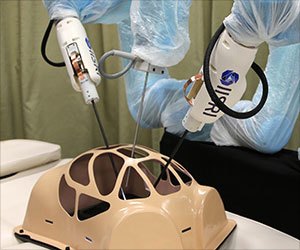Through robotics, stroke surgery and other neuroendovascular procedures could be made safer and easier.

‘Researchers hope that developing robotic catheters that can bend on command and sense their surroundings will allow these complex, risky procedures to be performed more simply and safely.’





For patients, this could mean safer and more efficient surgeries, better outcomes and an overall seamless experience. This type of technology would be applicable to any neurovascular procedure, all of which require navigation through small, tortuous, delicate vessels. Beyond stroke, these pathologies include brain aneurysms, AVMs, AV fistulae and others.
Robotics for Neuroendovascular Intervention
Researchers of the study, “Towards Self-steering Microcatheters for Neurointervention,” tested the robot through mock trials. The prototype autonomously navigated through the surgery simulation. Neuroendovascular surgery treats complex brain and spinal cord conditions by inserting a thin tube (catheter) into blood vessels to deliver medication, treatments or dyes into the brain, spinal cord or nerves. The procedures are minimally invasive, pose less risk to patients and often result in quick recovery.“The creation of this technology is a first step toward semi-autonomous navigation for neuroendovascular procedures,” said Rohan Chitale, MD, lead author of the study, neurosurgery residency associate program director and associate professor of neurological surgery at Vanderbilt University Medical Center, US.
Source-Eurekalert








